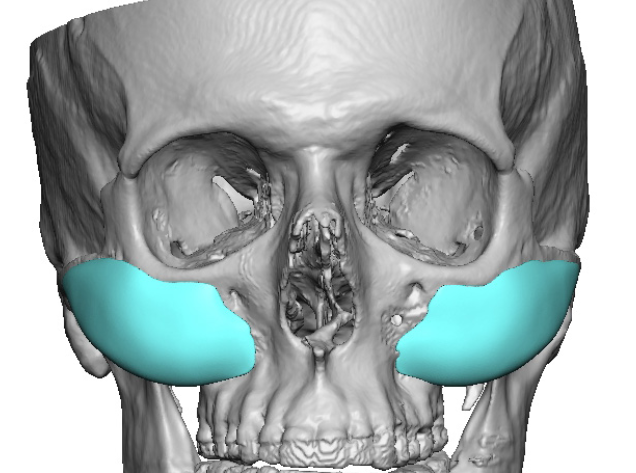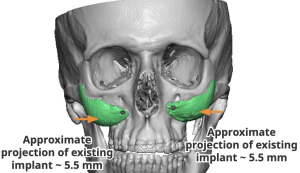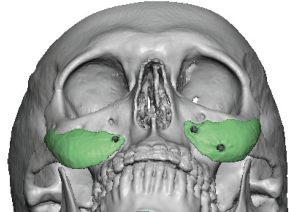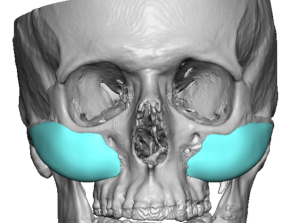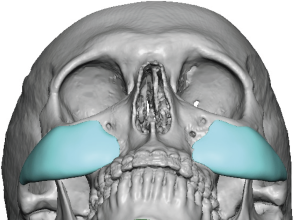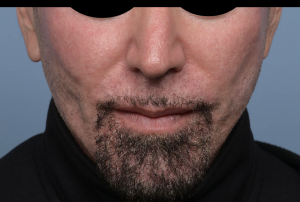Background: Cheek implants have been around for nearly fifty years and their basic styles have largely remained the same. Malar, submalar and combinations thereof (aka shell implants) have been the mainstay of implant-based cheek augmentation which can be effective for many patients. In an otherwise normal volume face these implants work best in women and not men as enhanced submalar volume can feminize the male face. This generally explains the not uncommon lack of aesthetic success with the use of standard cheek implants for many surgeons.
But in the male face that has loss of submalar volume or a thinner and more bony appearance (gaunt) the addition of volume in the anteroinferrior cheek area can be of aesthetic benefit. In men that have sustained such improvement with standard cheek implants there is also the question of implant placement…what is the actual position of the implant on the bone that has resulted in the favorable effect. This becomes relevant if the patient needs the cheek implants replaced …regardless of the reason.
A certain percentage of cheek implant patients may still seek injectable filler treatments afterwards if they desire additional volume. While these are usually successful there is always the rare chance of inducing an implant infection should the needle inadvertently enter the implant capsule. While the use of oral antibiotics may temporarily suppress the infection it is rare that antibiotics alone can cure it. Almost always the infected cheek implant will need to be removed. With unilateral cheek implant removal how it is replaced depends on how satisfied the patient was with the result before the infection. By getting injectable fillers the concept of making larger custom cheek implant replacements becomes relevant. This desire is magnified if cheek implant asymmetry was also present previously.

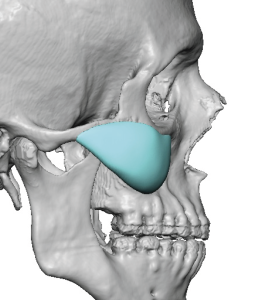
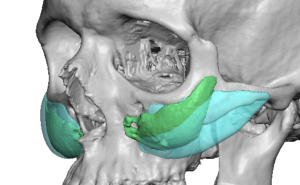
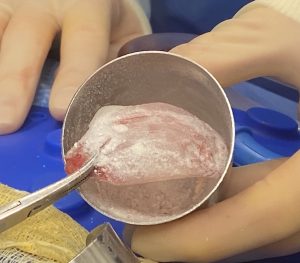
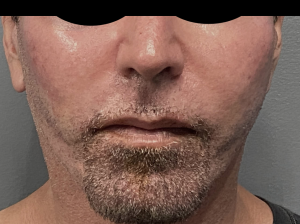
The first pair of cheek implants provides invaluable information about how to custom design new ones, particularly if their effect is in the correct dimensional type of change. This type of desired cheek augmentation effect is uncommon in men with the exception if submalar hollowing or a deficiency exists. While the first set of implants in this case produced a positive effect with enhanced submalar fullness and the patient kept the initial result for years, an implant infection prompted the desire for an increased volume change.
Key Points:
1) The first set of standard cheek implants provides invaluable insight in how to make a new custom cheek implant design better…particularly if fillers have been added them secondarily.
2) Most standard cheek implants will not work for many men but when submalar hollows are present the concept becomes more effective.
3) Cheek asymmetry is rarely satisfactorily improved with the use of standard implants as it is nearly impossible to ‘eyeball’ the differences with implants.
Dr. Barry Eppley
World-Renowned Plastic Surgeon

